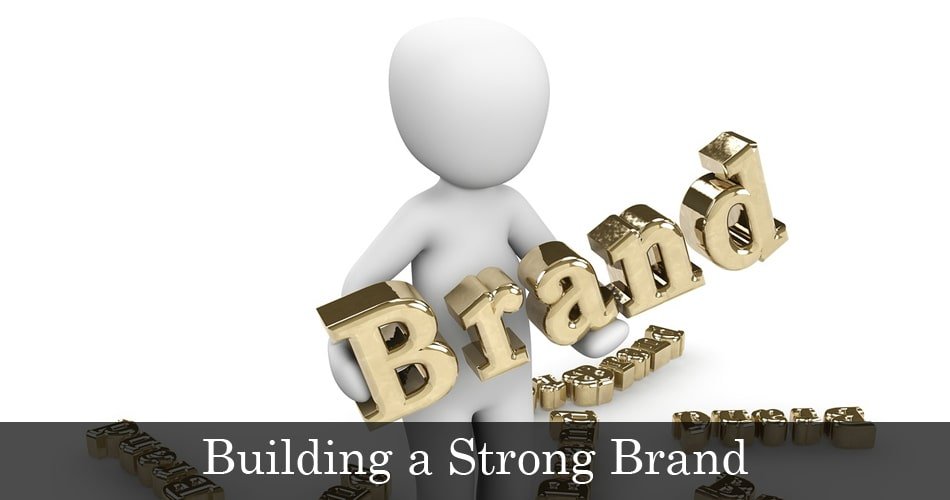Building a Strong Brand

Turn your brand into a magnet for customers – here’s how.
Crafting a powerful brand is the cornerstone of any successful business. It’s not just about creating a catchy logo or a clever tagline; it’s about forging an emotional connection with your audience, setting yourself apart from the competition, and building a loyal following that will champion your cause. Think of your favorite brands – they’re not just products or services; they are an extension of your personality, a reflection of your values, and a promise of quality and consistency.
As an entrepreneur or business owner, your brand is your most valuable asset. It’s the foundation upon which you build your reputation, attract customers, and drive growth. By investing time and resources into developing a strong brand, you’re not just creating a visual identity; you’re shaping the way people perceive your business and their decision to choose you over others. So, let’s explore the secrets to building a brand that stands the test of time and propels your business to new heights!
Brand Salience
Brand salience is about creating a brand identity that customers love. It measures how often and easily the brand comes to mind in various situations. How prominent is the brand? Is it easily remembered or recognized? How widespread is brand awareness?
Brand awareness helps customers understand the product or service category where the brand competes and the products or services sold under that brand name. This helps customers understand their needs and the products available to them.
High-salience brands have both depth and breadth in brand awareness. Customers remember the brand even if they are not using it. Brand salience is an important step in building strong brand equity, but it is not enough. The meaning and image of the brand are also crucial.
Brand Performance
Brand equity is about the product and what customers associate with it. Marketing success depends on whether the product, be it tangible, intangible, a service, an organization, or a person, meets or exceeds customer expectations.
Marketers must ensure that the consumer’s experience with the product meets their expectations, if not delighting them with its attributes and benefits. Studies have shown that high-quality brands tend to be more profitable and generate higher returns.
Brand performance is the ability of a product or service to meet customers’ needs practically. It includes the product’s features, aesthetics, utility, and economics. The strongest brand positioning is often based on performance advantages.
Brand Imagery
Brand imagery involves the extrinsic qualities of the product or service that satisfy customers’ psychological and social needs. It’s how people perceive a brand, not just what it does. Imagery includes aspects like user profiles, purchase and usage situations, personality and values, and history, heritage, and experiences.
Consumers form imagery associations from their own experiences or indirectly from advertising and word-of-mouth. The intangible aspects of a brand often play a significant role in how it is perceived.
Brand Judgments
Brand judgments are customer opinions and evaluations about a brand, formed by combining brand performance and imagery associations. Important judgments include quality, credibility, consideration, and superiority.
- Quality: Perceived and actual quality of the product.
- Credibility: Evaluated by expertise, trustworthiness, and likability.
- Consideration: Relevance of the product to customer needs.
- Superiority: Comparison of the brand to competitors.
Brand Feelings
Brand feelings are customers’ emotional reactions to the brand. These feelings can be related to the brand’s social currency and the impact of the brand’s marketing program on customers’ attitudes about themselves and their relationships with others. Positive brand perceptions and feelings influence consumer behavior and help build a strong brand.
Brand Resonance
Brand resonance is the relationship and level of identification customers have with the brand. It measures the intensity of the connection and includes behavioral loyalty, attitudinal attachment, sense of community, and active engagement.
- Behavioral loyalty: Regular use and purchase of the brand.
- Attitudinal attachment: Emotional connection with the brand.
- Sense of community: Feeling of belonging to a group of brand users.
- Active engagement: Participation in activities related to the brand beyond purchase.
Conclusion
A strong brand is more than just a logo or a catchy slogan; it’s about creating meaningful experiences that leave a lasting impression. By investing time and effort into understanding your audience and staying true to your values, you can build a brand that not only attracts customers but also inspires them. Start your branding journey today and watch your business thrive!